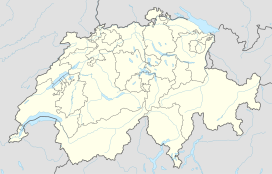Rigi massif
| Rigi | |
|---|---|

Rigi behind Lake Lauerz
|
|
| Highest point | |
| Peak | Rigi Kulm |
| Elevation | 1,797.5 m (5,897 ft) |
| Prominence | 1,290 m (4,230 ft) |
| Isolation | 13.1 km (8.1 mi) |
| Coordinates | 47°03′24″N 8°29′08″E / 47.05667°N 8.48556°ECoordinates: 47°03′24″N 8°29′08″E / 47.05667°N 8.48556°E |
| Geography | |
| Country | Switzerland |
| Canton | Schwyz and Lucerne |
| Parent range | Schwyzer Alps |
| Topo map | Swiss Federal Office of Topography swisstopo |
| Climbing | |
| Easiest route | Train and Cable-car |
The Rigi (or Mount Rigi; also known as Queen of the Mountains) is a mountain massif of the Alps, located in Central Switzerland. The whole massif is almost entirely surrounded by the water of three different water bodies: Lake Lucerne, Lake Zug and Lake Lauerz. The range is in the Schwyzer Alps, and is split between the cantons of Schwyz and Lucerne, although the main summit, named Rigi Kulm, at 1,798 meters above sea level, lies within the canton of Schwyz.
The Rigi Kulm and other areas, such as the resort of Rigi Kaltbad, are served by Europe's oldest mountain railways, the Rigi Railways. The whole area offers many activities such as skiing or sledging in the winter, and hiking in the summer.
The name Rigi is from Swiss Old High German *rigî "horizontal stratification, strip, band", from OHG rîhan "gird; pleat, string", cf. OHG rîga ", stripe, furrow", after the horizontal rock ledges and grass strips surrounding the mountain from west to east. The name is first recorded in 1350 as Riginun.
The name was interpreted as Regina montium "queen of mountains" by Albrecht von Bonstetten (1479), who however gives Rigena as alternative form.
Bonstetten's interpretation as Regina was influential in the 17th century, and was still repeated in 18th-century travelogues. Karl Zay (Goldau und seine Gegend, 1807) criticized this latinization, arguing for mons rigidus instead. Later in the 19th century, many authors repeated either rigidus or regina as the name's supposed origin. The two possibilities were also adduced as explanation the name's grammatical gender alternating between masculine and feminine. Brandstetter (Die Rigi, 1914) finally discredited these interpretations and established the origin in Old High German rîga (whence modern German Reihe, Reigen; cognate with English row).
There are multiple public transport options available to ascend Mt. Rigi:
...
Wikipedia

